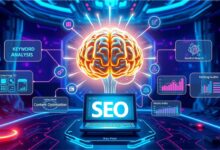
As a creative agency, your primary goal is to not only deliver innovative and effective campaigns for your clients but also to build strong, long-lasting relationships. Achieving this requires a deep understanding of your client’s needs and goals, as well as a commitment to delivering measurable results that drive ROI.
In this blog post, we’ll explore some strategies for improving ROI and client relationships in creative agencies. This includes the importance of setting clear goals and expectations, providing regular updates and feedback, and leveraging data to measure and optimize your campaigns.
We’ll also examine the role of effective communication, collaboration, and transparency in building successful client relationships. By implementing these strategies, you can ensure that your agency is delivering value to your clients while building a reputation as a trusted partner in their success.
Improving Client Relationships with Technology
The success of a creative agency heavily relies on maintaining strong relationships with clients, and technology plays an essential role in achieving this goal. By utilizing innovative tools and software, agencies can streamline communication, provide better customer service, and offer customized solutions to meet their clients’ unique needs.
a. Utilizing CRM Software to Manage Client Data
Customer Relationship Management (CRM) software is crucial for managing client data effectively and efficiently. CRM software allows businesses to compile all their customers’ data into one central hub, enabling personnel to quickly access the relevant information when needed. Additionally, CRM systems enable agencies to track interactions with clients over time so that they can anticipate future needs and preferences more accurately.
b. Implementing Chatbots for Customer Service
Chatbots are being adopted as a means of providing quick and effective customer service, reducing the need for human input. Creative agencies can benefit from implementing chatbots by automating routine inquiries such as project updates or billing questions while freeing up staff resources for more complex tasks that require personalized attention.
- Faster response times: Clients appreciate prompt responses; chatbots help ensure timely replies even during peak hours or outside business hours.
- Easily scalable: As your client base grows, chatbots allow you to maintain consistent levels of support without needing additional manpower.
- Data collection: Chatbot interactions generate valuable insights into client preferences and pain points, which can be used to improve your services.
c. Developing Customized Dashboards for Clients
Offering clients a customized dashboard that displays real-time data on their projects is an excellent way to enhance transparency and trust. These dashboards can include information such as project status, key performance indicators (KPIs), budget tracking, and more. By furnishing a comprehensive view of the services they are receiving, customers can become more engaged in the procedure and have all the information needed to make knowledgeable decisions regarding their marketing plans.
In summary, technology has become an indispensable tool for creative agencies looking to strengthen client relationships. By leveraging CRM software, implementing chatbots for customer service, and developing customized dashboards tailored specifically to each client’s needs, agencies can foster long-lasting partnerships built on trust and satisfaction.
By utilizing CRM software, chatbots for customer service, and customized dashboards for clients, marketing and advertising agencies can improve their client relationships with technology. By maximizing ROI through the use of technology-based strategies such as analyzing performance metrics to identify opportunities for improvement, A/B testing campaigns to optimize them further and tracking results in real time with analytics tools – agencies can take their workflow management efforts one step further.
Maximizing ROI with Technology-Based Strategies
To maximize ROI, agencies must employ technology-based strategies in today’s competitive market. By utilizing advanced agency management software like Function Point and techniques, agencies can optimize campaigns, identify opportunities for improvement, and track results in real-time. In this section, we will explore three key approaches that can help you boost your agency’s performance.
Analyzing Performance Metrics to Identify Opportunities for Improvement
To ensure the success of your marketing efforts, it is crucial to analyze performance metrics regularly. By studying performance metrics, it is possible to pinpoint areas where campaigns could be improved. Some essential metrics include click-through rates (CTR), conversion rates, bounce rates, and average session duration.
- Click-through rate: The percentage of users who clicked on an ad or link compared to the total number of impressions.
- Conversion rate: The percentage of users who completed a desired action (e.g., making a purchase) after clicking on an ad or visiting a landing page.
- Bounce rate: The percentage of users who leave a website after viewing only one page without taking any further action.
- Average session duration: The average amount of time spent by users during each visit to your website or app.
Analyzing these metrics helps you pinpoint areas that need improvement while also highlighting successful strategies worth replicating across other campaigns.
Utilizing A/B Testing to Optimize Campaigns
A/B testing, also known as split testing, is a powerful technique for optimizing your marketing campaigns. It involves creating two or more variations of an ad, landing page, or email and then measuring their performance to determine which version yields the best results. By implementing A/B testing, you can make data-driven decisions that lead to higher conversion rates and better ROI.
Here are some elements you might consider testing:
- Headlines
- Call-to-action (CTA) buttons
- Images and videos
- Email subject lines
- Landing page layouts
A/B testing can give you an idea of what works best with your target market, enabling you to modify campaigns for optimal performance.
Tracking Results in Real-Time with Analytics Tools
To maximize ROI, it’s essential to monitor campaign performance continuously. This allows you to identify trends quickly, respond to changes in user behavior promptly, and optimize your strategies on-the-fly. Modern analytics tools like Google Analytics or Adobe Analytics enable real-time tracking of various metrics such as traffic sources, conversion rates, bounce rates, etc., providing invaluable information for decision-making.
Google Analytics, for example, offers customizable dashboards where users can track key performance indicators (KPIs), set up alerts when specific thresholds are reached, and create custom reports tailored according to individual needs.
Incorporating these technology-based strategies into your creative agency’s workflow will empower you not only to improve overall efficiency but also to drive tangible results leading towards maximized return on investment.
Maximizing ROI with Technology-Based Strategies
In the competitive world of creative agencies, maximizing return on investment (ROI) is crucial for success. By implementing technology-based strategies, your agency can optimize campaigns and make data-driven decisions to improve overall performance. In this section, we will discuss three key approaches that leverage technology to maximize ROI: analyzing performance metrics to identify opportunities for improvement, utilizing A/B testing to optimize campaigns, and tracking results in real time with analytics tools.
Analyzing Performance Metrics to Identify Opportunities for Improvement
The first step towards maximizing ROI is understanding how well your current marketing strategies are performing. By using digital analytics tools, you can gather valuable insights into user behavior and campaign effectiveness. Analytics tools can provide useful data regarding user engagement and campaign performance, such as conversion rate, bounce rate, CTRs etc.
- Conversion Rates: Measure the percentage of users who complete a desired action (e.g., making a purchase or signing up for a newsletter).
- Bounce Rates: Indicate the percentage of users who leave your website after viewing only one page – high bounce rates may signal issues with content or user experience.
- Click-Through Rates (CTR): Show how often users click on ads or links within emails – low CTRs could suggest that ad copy or email subject lines need improvement.
Analyzing these performance metrics helps you identify areas where improvements can be made so that you can allocate resources effectively and boost overall ROI.
Utilizing A/B Testing to Optimize Campaigns
By using A/B testing, marketers can compare the performance of two versions of an ad, landing page or email to gain insight into which elements are most effective at driving conversions. By running controlled experiments and analyzing user engagement with each version, you can make data-driven decisions about which elements are most effective at driving conversions.
For example, Optimizely is a popular A/B testing platform that enables marketers to test various aspects of their campaigns such as headlines, images, call-to-action buttons, and more. Implementing this technology-based strategy ensures your marketing efforts are optimized for maximum ROI.
Tracking Results in Real Time with Analytics Tools
Real-time analytics tools provide valuable insights into how users interact with your digital content on an ongoing basis. This data helps you spot trends and discern user habits, enabling you to tailor your marketing plans accordingly.
Google Analytics, for instance, offers real-time reporting features that enable agencies to monitor website traffic sources (e.g., organic search results vs paid ads), geographic locations of visitors, devices used by users (desktop vs mobile), and much more. By leveraging these insights from real-time analytics tools, creative agencies can make informed decisions on where to focus their resources for maximum impact and ROI.
Incorporating technology-based strategies like performance metric analysis, A/B testing optimization techniques along with real-time tracking using analytical tools will ensure better decision-making processes within creative agencies leading them towards maximizing returns on investment effectively while staying ahead in the competitive market landscape.
Conclusion
In conclusion, improving ROI and client relationships in a creative agency requires a multifaceted approach that combines effective communication, data-driven decision-making, and a commitment to delivering measurable results. By setting clear goals and expectations, providing regular updates and feedback, and leveraging data to measure and optimize your campaigns, you can improve the effectiveness of your campaigns and build stronger relationships with your clients.
Additionally, by fostering a culture of collaboration, transparency, and accountability within your agency, you can ensure that everyone is aligned around the shared goal of delivering value to your clients. With these strategies in place, your agency can drive better results and build long-lasting, mutually beneficial relationships with your clients.







